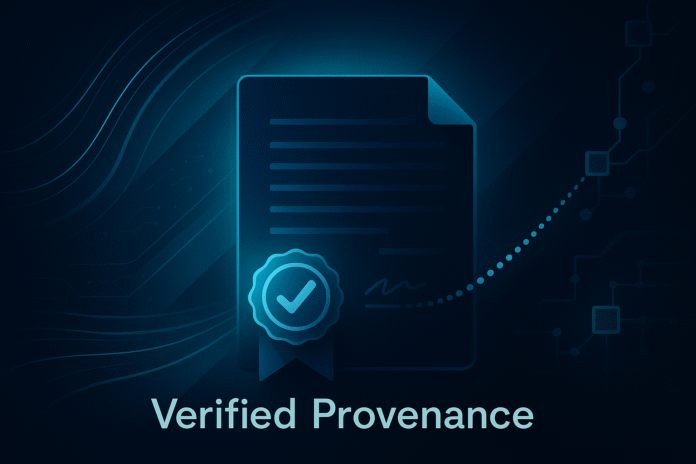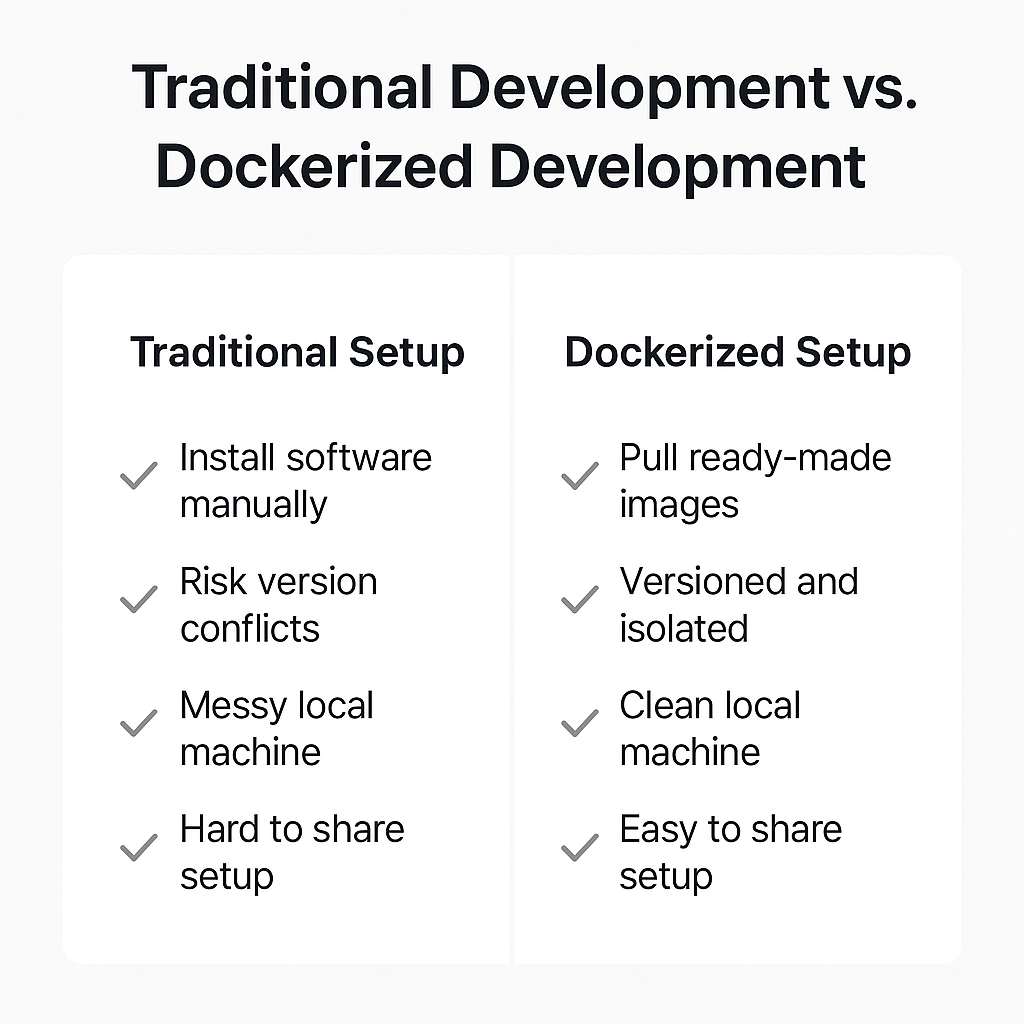The internet we grew up with was built on a simple idea: that content online was created by people — individuals, teams, authors, journalists, creators. It wasn’t always accurate, but there was an implicit assumption that behind every article, post, image, and video was a human being who had something to say.
That era is over.
We’re now living in a time when the vast majority of what flows through digital spaces is no longer human-made. Artificial intelligence can generate convincing news articles, social media posts, marketing copy, and even research papers at industrial scale. Entire networks of synthetic content now pollute search results, overwhelm feeds, and blur the lines between truth and fabrication.
And while there’s plenty of discussion about detection tools and content moderation, they all share the same fundamental flaw: they treat the problem reactively, trying to filter or fight an endless stream of generated noise.
What we need is something deeper — a trust layer for the internet itself. A system that doesn’t just guess whether something might be real, but can prove that it is.
That’s the purpose of Verified Provenance — an open, public trust infrastructure designed to bring transparency, accountability, and verifiable authorship back to the digital world.
Why Identity Isn’t Enough
Many existing approaches try to solve the authenticity crisis by verifying people: “blue checks” on social platforms, digital IDs, identity verification systems. While helpful, they’re incomplete.
Here’s the problem: knowing who published something does not prove they created it.
- A verified journalist can still publish a fully AI-generated article.
- A reputable company can silently rewrite content months after publication.
- A publisher can plagiarise and republish work that isn’t theirs.
Identity verification solves one piece of the puzzle — but it doesn’t address the deeper question: Did this specific person (or organization) create this specific piece of content, at this specific point in time?
That’s where provenance comes in.
Introducing Verified Provenance
Verified Provenance is an open, standards-based trust layer for digital content. Its mission is simple: to make it possible to prove, with cryptographic certainty, who created something, when it was created, and whether it has been altered.
It doesn’t rely on proprietary platforms, closed APIs, or private databases. Instead, it uses open technologies — the same ones that secure software, cryptocurrencies, and supply chains — to build a verifiable, tamper-evident record of content creation.
At its core, Verified Provenance rests on 3 pillars:
- WHO – Authorship is confirmed with cryptographic signatures, proving the identity of the creator.
- WHAT – The integrity of the content is verified using hashes and Merkle trees, ensuring nothing has been altered.
- WHEN – Blockchain-anchored timestamps prove when the work existed, providing a permanent record that cannot be forged.
Together, these pillars create a system of digital provenance that anyone — readers, platforms, publishers, even courts — can verify independently.
AuthorProvenance: The First Tool in the Ecosystem
The first step in building this trust infrastructure is a practical, usable tool that creators can start using today. That’s where AuthorProvenance comes in.
AuthorProvenance is the first open-source project in the Verified Provenance ecosystem — a free, lightweight utility that makes proving the origin and integrity of written content as simple as writing it.
Here’s how it works:
1. Create, as you always do.
You write your article, research paper, newsletter, or essay using any tool you like. Nothing about your creative process has to change.
2. Track your work’s evolution.
AuthorProvenance uses Git — the same version control system used by developers worldwide — to record every meaningful change. Each commit becomes a timestamped snapshot of your work’s state.
3. Sign and secure each version.
Each snapshot is signed with your private cryptographic key (GPG). This ensures that only you (or someone you’ve authorized) can produce a valid signature.
4. Anchor it in time.
AuthorProvenance combines those signed changes into a compact fingerprint called a Merkle root and anchors it in the Bitcoin blockchain using OpenTimestamps. This step provides irrefutable proof that your content existed no later than a specific point in time.
5. Generate a portable proof.
Finally, the tool creates a lightweight provenance.json manifest that contains the essential evidence: the content hash, your public key, the commit reference, and the blockchain timestamp. Anyone with your work and this manifest can verify its authenticity — no middleman required.
Why This Matters
This isn’t just a technical exercise — it’s a fundamental shift in how we establish trust online.
With AuthorProvenance, creators can:
- Prove ownership – Establish that you created a piece of content before anyone else.
- Protect integrity – Demonstrate that your work hasn’t been altered since publication.
- Build credibility – Show audiences, clients, or publishers that your work is authentic.
- Defend your rights – Provide verifiable evidence in legal or copyright disputes.
For readers, platforms, and publishers, it means something even more profound: a future where authenticity isn’t a guess — it’s a fact that anyone can independently verify.
Open, Portable, and Private by Design
Verified Provenance is built on three guiding principles:
- Open – Everything is open source and standards-based. Anyone can inspect the code, run the tools, or build on top of them.
- Portable – Proofs are not tied to any platform or product. The provenance.json manifest can travel with your work, whether it’s hosted on a website, shared as a PDF, or printed in a book.
- Private – No original content ever leaves your device. Only cryptographic fingerprints and metadata are shared.
This is crucial. Verified Provenance isn’t a new gatekeeper — it’s a foundation anyone can build on, free of platform lock-in, centralized control, or hidden dependencies.
Real-World Use Cases
The implications of a verifiable provenance layer are enormous:
- Writers & Journalists: Prove the originality of reporting and protect against plagiarism.
- Researchers & Academics: Timestamp research outputs and establish precedence for discoveries.
- Publishers: Provide readers with verifiable proof that articles haven’t been silently altered.
- Businesses & Agencies: Validate that marketing copy, white papers, and product documentation are authentic and unchanged.
- Independent Creators: Strengthen credibility and differentiate human work from mass-generated content.
In an environment where anyone can generate content, provenance becomes a competitive advantage.
Where We’re Headed
AuthorProvenance is only the first step. The Verified Provenance project will expand over time to include:
- Tools for other content types — including code, video, audio, and multimedia.
- Simple browser-based verification interfaces for readers and publishers.
- Plugins and integrations for popular content management systems.
- A shared, open manifest specification that anyone can implement.
But the mission remains the same: to make verifiable authenticity a fundamental property of digital content — as normal and expected as a domain name or an SSL certificate.
Get Started Today
The authenticity crisis isn’t going away. Synthetic content will keep multiplying. Trust will continue to erode unless we build new systems to support it.
That’s why Verified Provenance exists — and why AuthorProvenance is available right now, free and open-source, for anyone who wants to protect their work and prove their authorship.
If you publish words on the internet — whether you’re a journalist, researcher, creator, or business — this is your chance to take back control of your voice and your credibility.
- Visit the project on GitHub.
- Install the CLI and start protecting your next article.
- Share your verified work with the world.
In a world full of synthetic noise, authenticity is your greatest advantage.
Verified Provenance is how you prove it.
StayFrosty!
~ James
Q&A Summary:
Q: What is Verified Provenance?
A: Verified Provenance is an open, standards-based trust layer for digital content. Its mission is to prove, with cryptographic certainty, who created something, when it was created, and whether it has been altered.
Q: What are the three pillars of Verified Provenance?
A: The three pillars of Verified Provenance are: 'WHO' - authorship is confirmed with cryptographic signatures, 'WHAT' - the integrity of the content is verified using hashes and Merkle trees, 'WHEN' - blockchain-anchored timestamps prove when the work existed.
Q: What is AuthorProvenance?
A: AuthorProvenance is the first open-source project in the Verified Provenance ecosystem. It’s a free, lightweight utility that makes proving the origin and integrity of written content as simple as writing it.
Q: What benefits does AuthorProvenance offer to creators?
A: With AuthorProvenance, creators can prove ownership, protect integrity, build credibility, and defend their rights by providing verifiable evidence in legal or copyright disputes.
Q: What are the guiding principles of Verified Provenance?
A: Verified Provenance is built on three guiding principles: it is open, portable, and private by design. It is open-source and standards-based, proofs are not tied to any platform or product, and no original content ever leaves your device.


